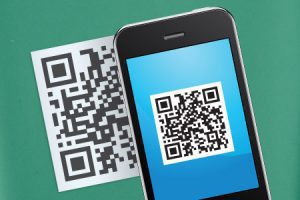
QR codes can also be used to:
- Link directly to download an app on the Apple App Store or Google Play
- Authenticate online accounts and verify log-in details
- Access Wi-Fi by storing encryption details such as SSID, password and encryption type
- Send and receive payment information.
Where Are QR Codes Found?
QR codes were initially invented to help track parts in vehicle manufacturing, and they are still used throughout the manufacturing industry.
You’ll also find QR codes utilized by other businesses that need to keep a close eye on products and supplies, such as the construction, engineering, and retail industries.
Postal services around the world also use them. Because they contain a large amount of information, such as postal addresses, they are becoming increasingly relied on to track parcels.
QR codes are now also used at colleges to help engage with students. They’ve appeared everywhere from the classroom to the library, where they are used to help students find the books they’re searching for.
Examples of QR code use in marketing and advertising campaigns
The places you are more likely to see QR codes in your day-to-day life are in sales and marketing campaigns.
Many advertisers like to use QR codes in their campaigns because it provides a faster and more intuitive way to direct people to websites than by entering URLs manually.
They can even be used to link directly to product pages online. For instance, if you were searching for the exact dress a model was wearing in a poster, a QR code could directly take you to the web page where you could purchase it.
You may also find QR codes on the packaging for some of your favorite products. These QR codes can reveal information about the product, such as nutritional information, or special offers you can use for next time.

